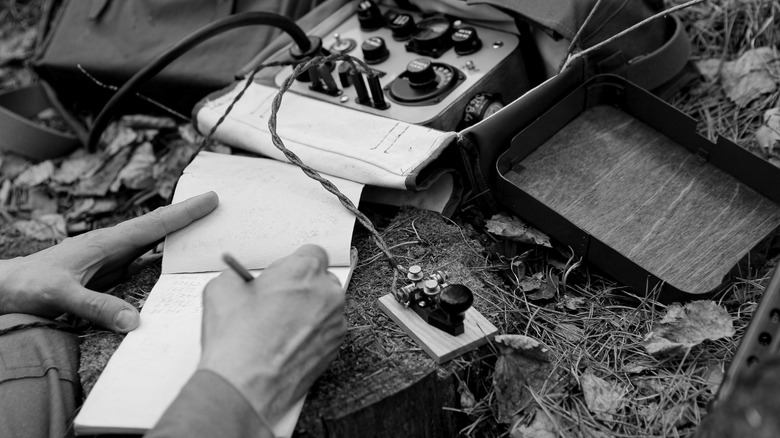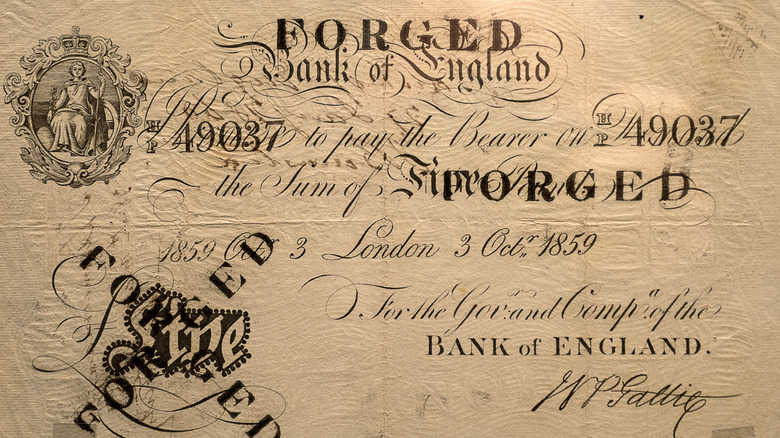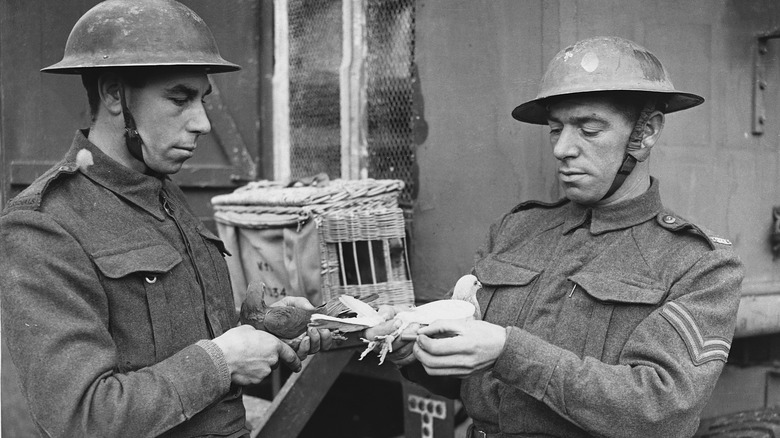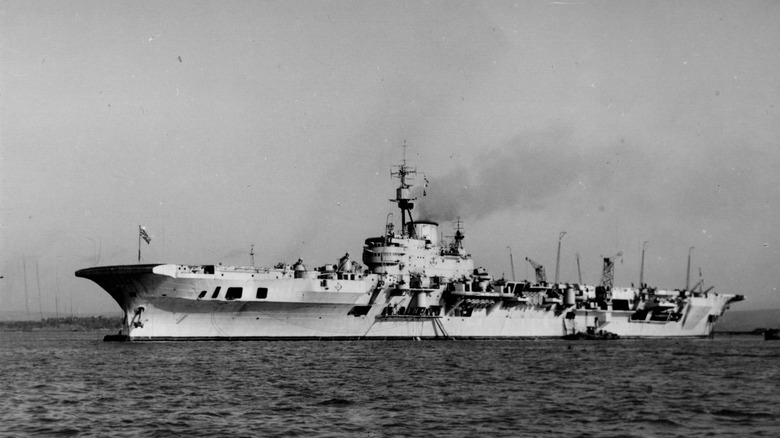Weird World War II Missions That Almost Happened
World War II ended in 1945, but still casts a huge shadow over the modern world, with current geopolitical strife rooted in the power struggles that occurred in its aftermath. The conflict is perhaps most commonly characterized in the world's collective imagination for its most important clashes: The Battle of the Somme, which consisted of brutal trench warfare in Flanders; the D-Day Landings, in which thousands of Allied troops poured onto French beaches amid deadly machine gun fire; and the Battle of Stalingrad, which historians believe may have been the bloodiest battle in the history of humanity.
But World War II was also a period of great innovation. Nations used every resource available in the hope of gaining the upper hand against their enemies, from spying and other forms of intelligence to scientific breakthroughs and daringly experimental military tactics. Indeed, the war years were full of weird missions, ideas, and gambles that prove that fact truly is stranger than fiction.
Operation Bernhard
The crime of counterfeiting currency has historically been an aspect of organized crime, with gangs hoping to enrich themselves via the creation and circulation of forged banknotes. Of course, digital payments have become favored over physical cash, counterfeiting has generally given way to other forms of fraud. But in World War II, Nazi Germany saw forging currency as a potential boon to its war effort, and it even planned a mission that would put it into practice: Operation Bernhard.
The mission was overseen by SS Major Friederich Bernhard Krueger. In 1942, he exploited the knowledge of 142 Jewish prisoners at Sachsenhausen concentration camp to forge the security markers on British pound bills. Eventually, the copies had the distinguishing marks and feel of the real thing. The plan was reportedly to flood the British economy with the fake currency and enrich the Nazi war effort by using the forgeries to buy gold and to pay off Nazi spies in Britain. Though many fake bills from Operation Bernhard did indeed make it into the British monetary system, the scheme was detected by the Bank of England early on, leading to the withdrawal of high-value bills from circulation. The majority of counterfeits from Operation Bernhard were discovered after the war, having been dumped in a lake in Austria along with abandoned printing plates.
Project Pigeon
Psychologist and inventor B.F. Skinner was one of the most celebrated American minds of his day. By 1943, the United States had entered World War II, and the conflict was growing increasingly existential for all nations involved. Americans were encouraged to involve themselves with the war effort, and Skinner was no exception. It made sense, then, for him to use his skills for the Allies.
Turning his attention to the problem of ballistic accuracy in newly developed long-range missiles, Skinner came up with what became known as Project Pigeon: An outlandish scheme to train pigeons to pilot missiles toward enemy targets. The researcher had experimented with the birds in his work before, and he was convinced that a team of three kamikazes could together be trained to peck in the direction of a target, guiding the missile on the correct path as they did so.
Research into Skinner's plan received a generous amount of funding, leading to a successful Project Pigeon missile test. However, the military command eventually decided it was a bird-brained idea, and it was never put into action in the field.
Project X-Ray
It wasn't just domesticated animals like pigeons that the Allies hoped to deploy against their Axis targets during World War II. In America, the U.S. Navy was also working to exploit the flying abilities of wild bats. Specifically, the Mexican free-tailed bat, which had a huge population in Texas and New Mexico.
The mission involved developing a specially designed "bat bomb" that could be dropped over Japan to attack military targets on the ground. Project X-Ray saw the development of an innovative capsule design, which would house several of the flying mammals strapped with incendiary devices. The containers were designed to open after being dropped at dawn, allowing the bats to escape and — it was hoped — nest in the crevices of military bases and other targets with minimal chance of resistance from Japanese defenders.
There were issues with ensuring that bats would be awake at the time of deployment and an unfortunate incident in which the creatures accidentally burned down an airbase in New Mexico. Still, bat bombs were ready for deployment in 1944, when they were under the control of the Marines. However, at the last minute, resources were reassigned to the Manhattan Project. At this point, the development of the atomic bomb was understood to be the surest route to end the conflict with Japan, and Project X-Ray came to an end.
Project Habakkuk
World War II was the first conflict to employ widespread use of heavy machinery such as tanks, fighter jets, and submarines, all of which had been in their relative infancy in World War I. The hostilities also saw the evolution of battleships, with navies on both sides building upon past technology to maintain control of key shipping areas and disrupt their enemies' supply lines. As the two coalitions fought to achieve naval dominance, Britain, an island nation with a strong legacy on the high seas, looked to develop a new secret weapon that would let them "rule the waves" once again. The so-called Project Habakkuk sought to make future British battleships more resistant to torpedoes and aerial bombardment than ever before ... by making them out of ice.
The project was the brainchild of scientist Geoffrey Pyke, who planned to create an ice-based aircraft carrier some 2,000 feet long — dwarfing other carriers of the era. Weighing 2 million tons, the medium allowed for metals and other materials to be put to other military uses. Tests mixed water with sawdust and wood chips and resulted in ice that was as strong as concrete and resistant to attack. Pyke even managed to get British wartime prime minister Winston Churchill onboard with the idea. However, drawbacks in the design — including an over-reliance on cork and the vulnerability of the vessels' enormous rudder — eventually sank plans for one of the war's most outlandish projects.
The deployment of the Panjandrum
In 1942, Adolf Hitler's Nazi regime was in control of much of mainland Europe and the British Channel Islands. Amid the conflict, he ordered the building of vast coastal defenses in hopes of repelling incoming attacks from Britain and the United States. The result was the 3,850-mile long Atlantic Wall, a series of bunkers and other obstacles heavily defended with mines and gun nests.
The Atlantic Wall represented a major problem for the Allies, who began to cast around for potential ways to overcome it during their counterattack. One of these was the Panjandrum, a fanciful invention that could have played a role in the D-Day landings. The massive contraption consisted of a pair of enormous wheels, propelled by rockets and loaded with explosives. The plan was to deploy Panjandrums and launch them toward the Atlantic Wall in the hope of blowing through the concrete fortifications. Tests, however, were a failure, with the Panjandrum proving to be unreliable in terms of maintaining direction, and the rockets were often faulty. The planned deployment was shelved indefinitely.
But was the bizarre idea nothing but a hoax? According to some historians, the development of the Panjandrum may have been part of a grand deception. In this theory, the bizarre contraption was potentially leaked to the Nazis to divert their forces from other sections of the Atlantic Wall.




